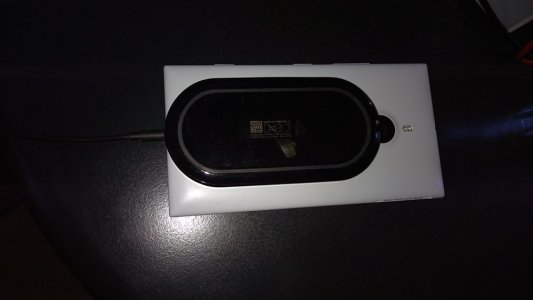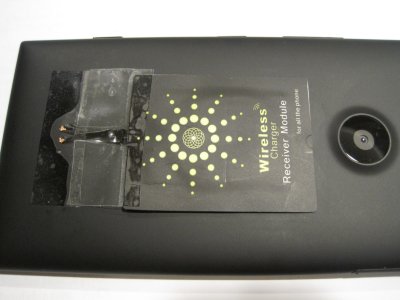Will it work long-term? That depends on how fragile the installation is. I would assume double-stick holds the receiver on the back of the phone, so it's probably pretty secure, so my only concern would be the electrical connections. As pictured, this receiver is only connected to (-) and (+), but (SLEEVE_DET) isn't connected, so I'm not sure how John's device is even sensing the charge voltage. In my testing, (SLEEVE_DET) had to be grounded (connected to negative) in order for the PMIC to determine a PMA charging sleeve was attached (and therefore expect a charge voltage through these pins). So, I'm not sure what's going on there, but John says it works. The physical connection to the chrome buttons seems like it might get twitchy since it's only held on with tape, but then again, it's completely removable without any sign of it ever having been there.
Anyway, it's still potentially a decent solution for people not interested in opening their devices, fraking with the PMA flex, soldering in a receiver, etc... Electrically, it's essentially identical, except for the missing connection to SLEEVE_DET which doesn't appear to be a problem for Jim's device (for some reason).
The "shield" on the back of the receiver is a ferrite core/pad used to magnetically couple the receiver coil to the transmitting coil. Ferrite is extremely hard but also very brittle, and it cracks very easily on these thin Qi receiver coils. It's best to avoid cracking it if possible, but small cracks don't appreciably degrade performance. The coils (Tx and Rx) must be facing each other to be properly coupled. A Qi coil that's backwards (i.e. has the ferrite pad in between the two coils) won't couple properly.
SonarTech



